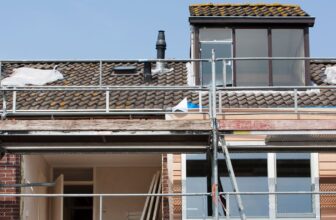Pros and Cons of Drylok (All You Need To Know)
A leaky basement is one of the most serious problems homeowners can face.
Moisture and humidity in the basement are very unhealthy, promote mold development, and can even jeopardize the structural stability of the whole house.
So, it’s necessary to take some precautions to prevent the water from leaking into the foundation, walls, and floors.
There are plenty of different solutions on the market, but probably the most widely used is Drylok.
It’s an extremely popular waterproofing paint that can help you significantly reduce water leakage.
However, it does have certain downsides.
Below, I’ll explore the pros and cons of Drylok to help you get a better understanding of whether this product will be helpful for your particular issue.
So, let;s dive in!
Table of Contents
4 Pros of Drylok
Powerful Waterproofer
When applied to the basement wall, Drylok will create a waterproof coat that should stop any water leakage.
Unlike regular paint, Drylok penetrates tiny pores to completely seal the wall so that no moisture can get through.
It can be used on a variety of surfaces, such as brick, masonry walls, concrete, cinder blocks, or stucco
Durable
Once you apply Drylok, your basement will be protected for quite some time.
Drylok offers a 10-year warranty for their basic product Original Masonry Waterproofer and even more, 15 years, for Drylok Extreme
Easy To Apply
Drylok is very simple and easy to use. Just like any regular paint, it can be simply brushed or rolled onto a previously cleaned surface.
It dries within 1.5 hours and is ready for recoating in 3 hours.
Textured Finish
After applying Drylok, your wall will have a sandy textured finish that you can paint over or leave as it is.
If you don’t like plain white walls, there are six different colors and 4 tints to choose from.
3 Cons of Drylok
Limited Mold Protection
While it will likely prevent mold from breaking to the surface, Drylok won’t kill it nor prevent its development within the walls.
In fact, its chemical makeup may provide a fertile ground for mold and mildew growth.
May Crack Under Pressure
As Drylok keeps the water from penetrating the surface, it may lead to the creation of pressurized bubbles inside the wall.
Because Drylok doesn’t expand or contract, over time, this pressure may cause the surface coating to crack.
Doesn’t Prevent The Exterior Water
Even though it creates a barrier that blocks the moisture from coming through the wall, Drylok doesn’t stop the exterior water from penetrating into the walls and foundation materials.
Is There Anything Better than Drylok?
Drylok does a pretty good job of keeping your basement dry, but in some situations, other products may work better.
For example, RadonSeal is the more versatile solution as it not only prevents moisture but also prevents radon and other gasses transmission, strengthens the concrete core, and works better against the mold.
Unlike Drylok which creates a surface barrier, RadonSeal penetrates inside the blocks and forms a bond with concrete, sealing it from inside.
You may also consider using Kilz instead of Drylok. Its advantage is that it creates a more smooth, thick, and appealing finish, unlike Drylok’s textured coating.
Also, while Drylok works only on bare walls, you can paint Kilz over the existing coat of paint, whether it’s latex or oil-based.
When Should You Not Use Drylok?
If you already have painted walls in the basement, you may be better off using some other waterproofing sealant.
Using Drylok will require extra work in the scrubbing of the current paint and cleaning the wall.
Furthermore, it shouldn’t be used on walls made of hollow blocks, as the water that penetrates inside the block will create hydrostatic pressure behind the Drylok barrier that may compromise the thin block walls.
In addition, you shouldn’t use Drylok on floors as it is rather ineffective there.
Conclusion
You should carefully consider all pros and cons of Drylok before deciding to use this waterproofing sealant. In the right situation,
Drylok can be very helpful in keeping your household dry and healthy for a relatively affordable cost.
Plus, it’s fairly easy to use and you can probably apply it yourself.
However, be aware that Drylok won’t solve the root cause of moisture problems.
It doesn’t work to prevent the water from the surroundings from entering the basement, so you’ll need to make sure to deal with this first.
If needed, ask a professional for help on fully sealing your house from the outside moisture.



















































































